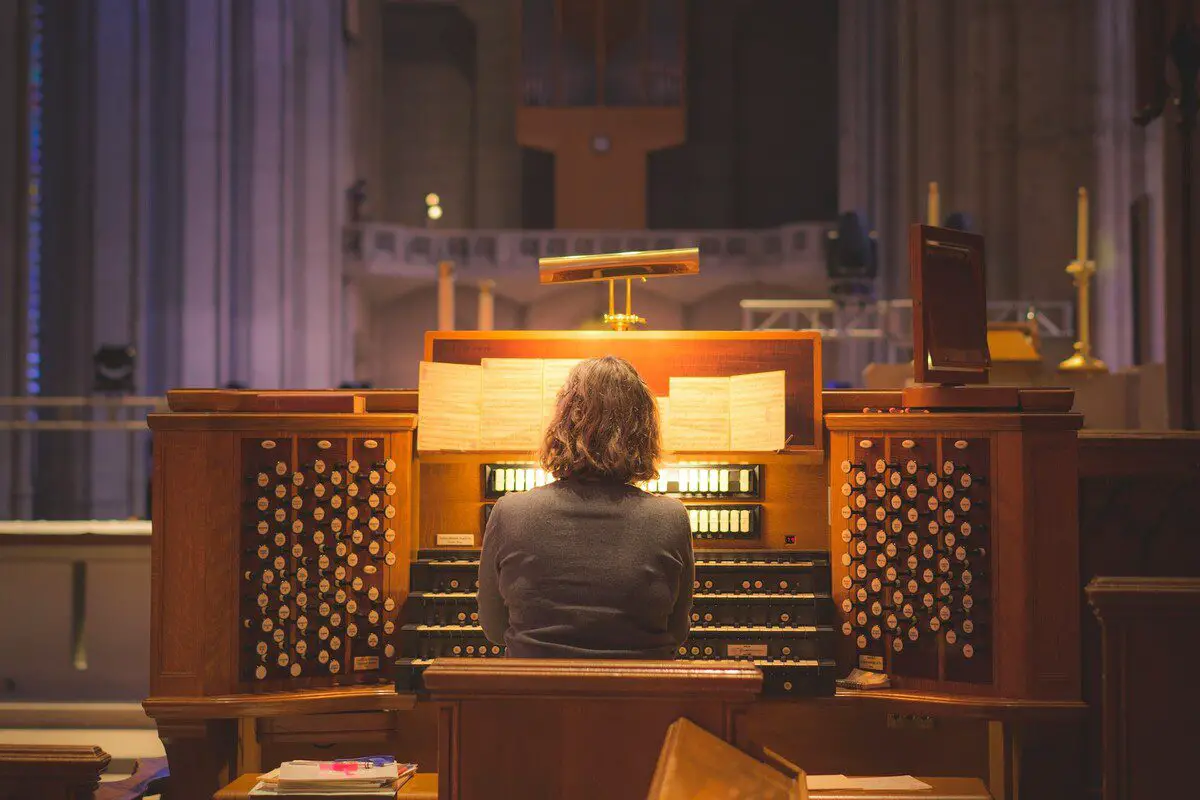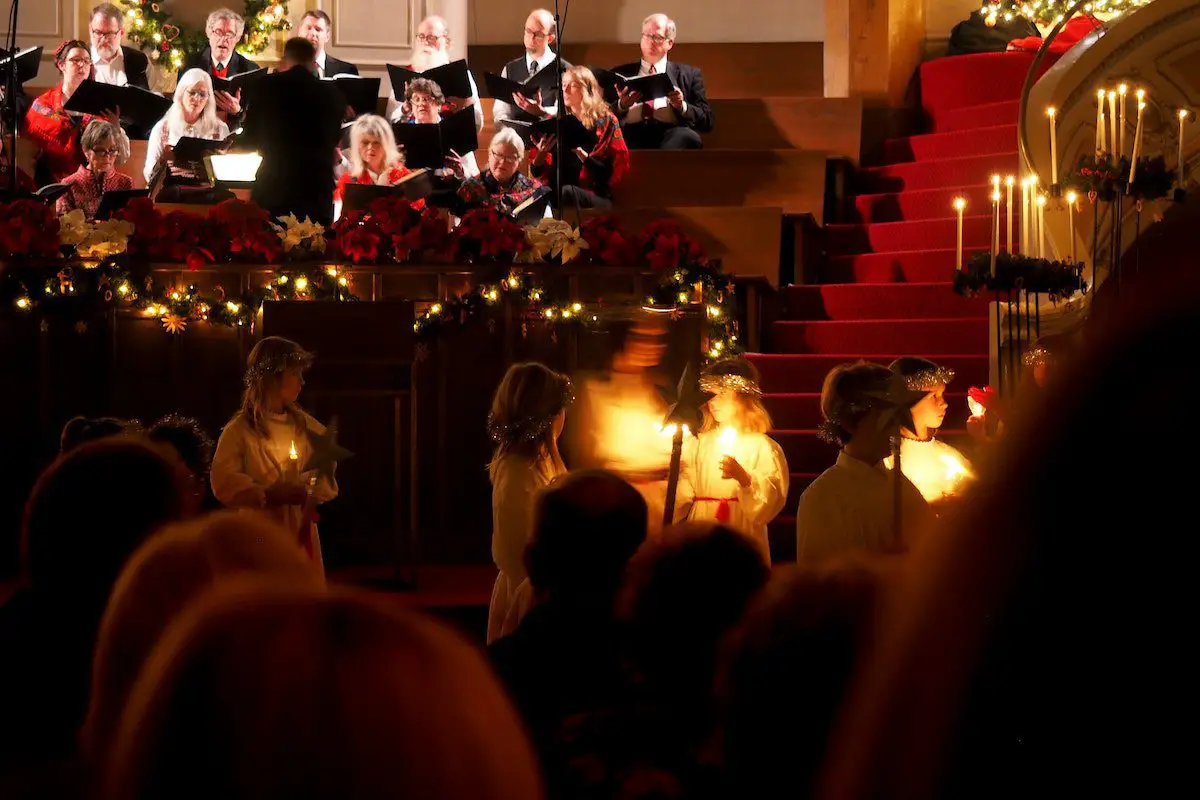Have you ever wondered how the chants and prayers like ‘Kyrie eleison’ or ‘Gloria in excelsis Deo’ you hear at a Mass can stir up such intense emotions in you? Isn’t it amazing how some of these melodies, unchanged for centuries, can still touch us so deeply? Let’s dive into the fascinating world of the Ordinary of the Mass, and explore the timeless resonance of these musical gems.
What is an Ordinary? The Ordinary is a part of the Roman Mass that consists of six chants, including ‘Kyrie eleison’ and ‘Gloria in excelsis Deo’, whose text remains the same throughout the Church year, regardless of the specific liturgical occasion. These unchanging hymns form a central part of the religious experience, connecting us to the age-old traditions of music and faith.
What’s the history behind incorporating chants into the liturgical service?
Chants in liturgical services have origins in early Jewish traditions, which early Christian communities adopted and adapted. Gregorian chant, emerging around the 6th century and often attributed to Pope Gregory I, became a foundational form of liturgical music in the Western Church.

Throughout the Middle Ages, monastic communities preserved and standardized chants, leading to the development of musical notation. The structure of the liturgy, comprising the Ordinary and Proper, dictated chant usage, elevating the Mass’s sacredness.
The Protestant Reformation brought changes in chant traditions, while the Catholic Church continued its embrace, though the Second Vatican Council in the 20th century initiated further adaptations. Today, chants remain a vital part of many Christian liturgies, a testament to their enduring power to express the faith and worship of the community.
AKAI Professional MPK Mini MK3

AKAI Professional MPK Mini MK3
What is the Ordinary of the Mass?
The Ordinary of the Mass refers to the set parts of the Roman Catholic liturgy that remain consistent throughout the liturgical year, regardless of the specific feast or season. The Ordinary contrasts with the Proper, which consists of the parts of the Mass that change according to the liturgical calendar and specific celebrations.
- Kyrie (Kyrie eleison): A prayer for mercy, often in a three-part form. It translates to “Lord, have mercy. Christ, have mercy. Lord, have mercy.”
- Gloria: A hymn of praise that begins with “Glory to God in the highest.” It’s used on Sundays outside of Advent and Lent, as well as on solemnities and feasts.
- Credo: The Nicene Creed or the Apostles’ Creed, which is a statement of faith that begins with “I believe in one God…”
- Sanctus: A hymn of praise that starts with “Holy, Holy, Holy.” It’s sung or recited before the Eucharistic Prayer.
- Agnus Dei: Translated as “Lamb of God,” this is a petition for mercy and peace, usually recited or sung before the distribution of Communion.
These chants have been around forever, unchanging, and continue to be an integral part of the liturgical service. If you’ve ever been to a Mass and felt the chills when the chants start, you’re not alone. That’s the power of music, my friend.
Why are these chants unchanging?
Here’s the deal: These six chants are known as the ‘Ordinary’ because they form the regular, or ‘orderly’, part of the Mass. Unlike the ‘Proper’ chants, which change based on the liturgical occasion, the Ordinary chants remain constant. They are like the anchor in a sea of shifting melodies, providing a comforting sense of familiarity amidst the ebbing and flowing chants that vary according to the season or feast.
…these chants, unchanged throughout the ages, connect us with history, tradition, and faith.
And let’s not forget the main point here, these chants, unchanged throughout the ages, connect us with history, tradition, and faith. There’s something pretty cool about being part of a millennia-old musical tradition, don’t you think?
Are there different versions of these chants?
Yes, indeed! Although the texts of the Ordinary chants remained consistent, creative minds over the centuries composed new versions of these chants called tropes and prosulas. These were essentially newly composed texts set to preexisting melodies.
Plus, there was never a set list of chants for all regions. Different regions – think Spain or Central Europe – and various religious orders each developed their own traditions. That’s pretty much why we have such a diverse array of Ordinary chants!
What are the musical traits of these chants?
Each chant of the Mass Ordinary carries its own distinct character – that’s part of their charm! They typically incorporate elements like repetitions of short melodic formulas. Now that’s a musical tactic I see used a ton in modern songs too, isn’t it cool how these ancient techniques still find their place in today’s music?

Another unique trait is the movement in the modus mixtus – which covers both the authentic and plagal range of a mode. Plus, the late period saw some rhythmized sections introduced to break the monotony, known as cantus fractus.
Is the full scope of the chants known?
Now, this is where things get a bit hazy. Although we’ve cataloged around two thousand melodies (impressive, right?), some of them were used for more than one chant. And that’s not getting into the variety from the late Middle Ages when chants were adapted from other genres. It’s pretty wild when you think about it—kinda like how DJs remix modern songs, right? So the reality is, we’re still uncovering the full scope of the chants of the Mass Ordinary.
Does every region follow the same melodies?
Nope, and that’s what keeps things interesting. While there’s a baseline for the chants, individual regions and religious orders developed their own traditions. Each flavor adds its own unique twist, but they all stem from the same roots. So whether you’re attending Mass in Spain or Central Europe, you’ll likely experience different versions of the Mass Ordinary.
Common ordinary chants of the Roman Catholic Mass
Here is a table outlining the ordinary chants of the Roman Catholic Mass. These are the most common ordinary chants, though there may be variations and additional chants in different traditions or specific liturgical seasons.
| Ordinal Number | Latin Name | English Name | Function |
|---|---|---|---|
| 1 | Kyrie | Lord, have mercy | A prayer for mercy |
| 2 | Gloria | Glory to God in the highest | A hymn of praise |
| 3 | Credo | I believe in one God | The profession of faith |
| 4 | Sanctus | Holy, Holy, Holy | A hymn of praise before the Eucharistic Prayer |
| 5 | Agnus Dei | Lamb of God | A prayer for mercy and peace before Communion |
If you want even more great tips and information, check out the video below.
Frequently Asked Questions (FAQ)
Let me get into some of the most frequently asked questions that pop up when discussing the Ordinary of the Mass, its relevance in modern music production, and its impact on the audio engineering world.
Can anyone use chants in their music?
Technically, yes, chants can be used by anyone in their music. But, it’s a good idea to remain respectful of their religious significance. Think of them as adding a dash of historical depth to your soundscape.
Will incorporating chants into music require special equipment?
Not necessarily. In fact, if you’re working with a home recording studio setup, a solid DAW (Digital Audio Workstation) should be enough. It’s the manner of incorporating these chants that matters more than any specific equipment.
Do I need to understand Latin to use these chants?
No, you don’t need to know Latin to use these chants in your music. However, it would be beneficial for you to understand the meaning carried by the chants to achieve the desired emotional impact in your music.
Conclusion
So, are you ready to let the ‘Kyries’ roll off your tongue and onto your next track? You won’t need to become a ‘Credo’-phile to use these chants in your music. But a little understanding of what they stand for could undoubtedly take your audio production to heavenly heights!
Remember, I read and reply to every comment. So let your thoughts flow, and let’s get a conversation going. Don’t forget to share this with anyone who might find it helpful, and check back here for all things music and audio production. Thanks for reading, and keep the music playing!
Key Takeaways
Before we part ways, let’s revisit the important points we’ve discussed in this article. This article covered the interplay between liturgical history, music production, and Common Mass chants. Here are some key takeaways:
- The Ordinary of the Mass involves six consistent chants used throughout the liturgical year.
- These chants have evolved over time, with varied interpretations across different regions and orders.
- The chants of the Ordinary play a significant role in home studio music production.
- Proper understanding and respectful application of these chants can enhance music compositions.















